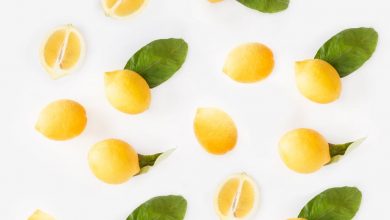
Butylated Hydroxytoluene and Its Effect on Health and Fitness
If we talk about breakfast cereals, many of you might go down your memory lane right back to your childhood! You might think of the times when your mom used to lay down a bowl of crunchy, colorful cereals filled with tasty nuts and dried fruits on the table just before you rushed to school. Eating the sweet and tasty cereals that you grew up eating or a box of cookies that you love to munch on even today is perhaps one of the biggest health risks you undertake right now, as they contain a harmful food additive called Butylated hydroxytoluene, or BHT, as it is popularly known.
What is Butylated Hydroxytoluene?
BHT is an additive and chemical made in a laboratory and is used as a preservative to keep food fresh. Both Butylated hydroxytoluene and its cousin Butylated hydroxyanisole (BHA) are man-made synthetic additives used as antioxidants by manufacturers to give food a long shelf-life for their own benefit.
Chemistry of BHT Food Preservatives
BHT, the molecular formula of which is C15H24O, is also known as 3,5-di-tert-butyl-4-hydroxytoluene; methyl-di-tert-butyl phenol; 2,6-di-tert-butyl-para-cresol.
How Does BHT Preserve Food?
BHT and its relative BHA are antioxidants and are hence oxidizable. Oxygen preferentially reacts with the compound and does not oxidize oil and fats, and in the process, protects them from getting spoilt. BHT, like BHA, is incompatible with ferric salts.
How to Avoid BHT Consumption
While research is still underway to prove the disadvantages and harmful effects of BHT, here are few things you can do to ensure that you avoid foods containing this harmful ingredient:
- Make sure that you read the labels before you buy any product. If there is BHT listed in the ingredient column, do not buy it.
- Buy 100% organic cereals to ensure that there are no harmful ingredients. Organic cereals will invariably not have BHT or BHA in them. However, be vary of foods that say “made with” or “contains” organic items, as it will most probably contain preservatives like BHT and BHA.
- While home-made food is more time consuming, it is certainly way healthier than processed foods and packaged breakfast cereals. Try to prepare food ahead of time and store it in the refrigerator if you have no time in the mornings to prepare fresh food for yourself and your family.

What is BHT Used In?
Apart from using it as a preservative in foods, BHT is also an ingredient in jet fuel, cosmetics, embalming fluid, and rubber petroleum. BHA is also directly applied to the skin to treat cold sores. Both BHT and BHA are also used as preservatives for cosmetic use, such as moisturizers, makeup, shampoos, deodorants, skin creams, and lipsticks, among others.
Further, it is also said to be effective in treating acquired immunodeficiency syndrome (AIDS) and genital herpes. However, there is more evidence required to prove its efficiency in treating these diseases and illnesses.
The chemical BHT is also present in petroleum and rubber products.
Why is BHT Used in Foods?
The reason why BHT and BHA are used by the food industry is that they both are very powerful preservatives that keep food fresh and help prevent it from becoming stale. They are used in oils, as it helps prevent oil from oxidizing. Oxidation removes essential nutrients from the foods and also affects its smell, color, and taste. Since these chemicals have antimicrobial properties, they are used in the food and also in packing items containing fats. BHT is also used as a yeast de-foaming agent. It helps in maintaining the nutritional value of the food, without affecting the smell, taste, and color.
What Foods Contain BHT?
BHT is present in most processed foods and it is easy to figure it out if you check in the ingredient list on every packed food item.
Some of the foods that contain BHT include:
- Breakfast cereals
- Vegetable oil
- Beer
- Potato chips
- Butter
- Cheese
- Processed meat
- Baked food items
- Packaged cake mix
- Packed snacks
- Dehydrated mashed potatoes
- Sausages (frozen)
- Rice (enriched)
- Lard
- Jello
- Candy
- Peanuts (salted)
- Chewing gum
- Canned foods
- Wine
Moreover, butylated hydroxytoluene is also present in the feed of animals.

BHT Safety Assessment: Facts and Concerns
BHT is recognized as safe, but is it really?
Some additives are classified as “Generally Recognized as Safe” or GRAS by the government. Though additives like BHT and BHA are presumed to be safe and can be used in food in a certain specified amount, there are loopholes because of which additives with questionable safety are listed in this category. The food items that are classified in the GRAS category need not go through any pre-market review and approval. Besides, there is no overlooking by the Food and Drug Administration either. Hence, manufacturers are free to add them in their foods the way they want, and in many cases, they obtain the status of GRAS without informing the FDA at all. There is also proof to show that certain individuals find it difficult to metabolize BHA and BHT, which in turn results in changes in health and behavior.
Conflicting Results on BHT Causing Cancer
Even though butylated hydroxytoluene is not listed as a carcinogen; few studies indicate that it might cause cancer in animals. Rats that were fed with foods containing BHT suffered from liver and lung tumors after a set period (EFSA 2012). The researchers also noticed that BHT caused negative effects on the development of the rat. Thyroid changes were also seen in animals, thereby implying that BHT might be able to cause disruption in endocrine signaling.
The review of BHT and BHA by the US Food and Drug Administration produced conflicting results. The chemical properties that make these compounds good preservatives also contain negative effects on the health.
While some research reveals that low doses of BHT and BHA can prove toxic to cells, high dosage of the compound is said to have positive implications. Both these chemicals can easily be broken and absorbed by our bodies. The biological effects of these compounds can be harmful and beneficial at the same time. Some studies reveal that consumption of antioxidants BHT and BHA, both in high and low dosage, might have anti-cancer properties because of the enzyme production in the body that detoxifies carcinogens. It is said that BHT prevents the multiplication of the virus by destroying the protective layer (outer) of the viral cells.
Many studies also reveal that BHT and BHA are oxidants that create reactive compounds in the body that cause cancer.
The National Toxicology Program has pronounced BHT to be a human carcinogen since the use of the compound in animals has indicated the risk of cancer. Hence, the consumer group in the Center for Science, in the best interest of the public, has listed BHA among the additives to avoid and has put them in the ‘caution’ column.
BHT Affects Motor Skills and Coordination
In another neurobehavioral study of the rats, it was found that BHT caused a negative impact on their motor skills and also affected their coordination before they were weaned (Vorhees 1981b).
Additional Studies Required to Give BHT GRAS Status
Most studies involving BHT and BHA have been conducted on animals and not humans. As mentioned earlier, the FDA recognizes some additives including BHA and BHT as “generally recognized as safe” (GRAS). A review by an independent committee supported them but insisted that uncertainties still exist, and hence, additional studies need to be conducted to ascertain its safety in foods.
Use of BHT in the Treatment of AIDS and Herpes Simplex
Initial study has indicated the positive effects that BHT can have in the treatment of AIDS and herpes simplex.
Testing BHT for Safety
The United States of America alone has more than over 80,000 chemicals that have been registered in the GRAS category and tested for safety to use in foods. These chemicals are found in foods, as well as house cleaning and lawn care products. We do not yet know the harmful effects of many of these chemicals. The costs required to perform extensive research on these chemicals, among other things, have prevented the complete test of these chemicals and its harmful effects.
If scientists are able to grow human tissue in a controlled environment in a laboratory, they will be able to test and evaluate the results of the new and existing chemicals on our body without posing any risk to human life and health. The results will most certainly enable us to get a clear understanding of the effects that BHT and many such additives have on our health, and how it might affect our health and weight loss journey.
Health and Environmental Hazard
Both BHT and BHA can stimulate allergic reactions to the skin and cause a hazard. As mentioned earlier, the International Agency for Research on Cancer has listed BHT as a likely human carcinogen.
Exposure to high doses of BHT and other additives over a long period of time has found to be very toxic for animals, causing dangerous diseases and effects like thyroid, liver and lung dysfunction, and blood coagulation.
A few studies have also indicated the possibility of BHT causing tumors in animals if consumed in high doses for an extended period. Some studies also reveal the harmful effects a high dosage of BHT can have on female and male sex hormones, thereby causing problems reproducing.
BHT, according to the United Nations Environment Program assessment has medium to high possibility for bioaccumulation in marine animals. Since BHT and BHA are used in very small amounts in food, the health ministry deems it safe to use it in foods, and hence they have approved it for use in food products across the globe.
BHT and Skin Safety
There is very little information when it comes to the risks that BHT poses on the health of human beings. Most experiments have so far been conducted only on animals, and hence it is not possible to determine the exact impact that it can have on us. The Skin Deep environmental working group created a searchable database of harmful and toxic ingredients that are used in personal care products and cosmetics. BHT lists top among those toxic ingredients that are associated with causing cancer, neurotoxicity, endocrine disruption, cellular and biochemical changes, and also developmental problems in the cells of the fetus.
BHT, when applied on the skin, remains there and passes through very gradually without producing a systemic response. No skin irritation or photosensitization was recorded when applied to the skin. Owing to all these factors, the final report that was submitted by the Cosmetic Ingredient Review way back in 2002 pronounced BHT as being safe to use in cosmetics as long as the dosage used in it is low.
If you are the kind of person who does not like to take risks when it comes to your skin and body, you can always opt for natural ingredients. Some of the natural ingredients that are used in cosmetics are so safe that they can be eaten. All these natural products can be purchased from organic or natural food stores and markets. While many people are careful when it comes to consuming foods with harmful additives and preservatives, not many care about applying them on their skin. It is important to bear in mind that the chemical that the skin absorbs can also have an adverse effect on the texture and quality of the skin.
Side Effects of BHT
BHT, owing to its oxidative characteristics and its chemistry, contributes to tumorigenicity and even carcinogenicity. There is enough evidence to prove that certain people face problems metabolizing the chemicals BHA and BHT, which in turn results in behavioral and health changes.

How BHT Affects Health and Fitness
There is no doubt that you are what you eat. At least 80 percent of your fitness results depend on what you consume day in and day out.
Food companies come up with delicious food items each day to entice our palette. While all of us enjoy eating delicious packed snacks and cookies, very few of us bother to look into the ingredients that go in making these colorful, seemingly fresh, and mouth-watering foods. There is a whole lot of misleading information out there, which may lead us to eat the wrong foods, leading to weight gain and poor health. The preservatives used to preserve these foods and the colors used to make it appealing to consumers can do a great deal of harm to your body in the long run. By avoiding these ingredients, you are improving the quality of what you put in your body. Cutting ingredients – like BHT and BHA, among others – will help you lose your excess weight and increase your energy level, thereby making you feel stronger and more active.
Cut harmful ingredients from your diet and replace them with “real” food like vegetables, fruits, whole grain, lean meats, nuts, and seeds.
How Preservatives Like BHT Trigger Weight Gain and Obesity
Did you know that the breakfast cereal that you have every morning, thinking it is the healthiest meal that you can feed your body, can make you fat or contribute to your weight gain? The cereals and the potato chips that you find hard to resist have harmful preservatives that do more harm than good to your body.
The scientists at the Cedars-Sinai Medical Center studied three chemicals (endocrine disruptors) that are said to interfere with the hormones in the body. The three compounds comprised of BHT, PFOA (perfluorooctanoic acid), and TBT (tributylin). While BHT is used as a preservative in foods and for many other uses, PFOA is found mostly in household items and cookware. TBT is an ingredient that you find in paints and is also used in seafood and water systems.
The researchers, in the study, gathered blood samples from people and converted them into pluripotent stem cells so that they could later be taken to grow into the tissue that gets lined in the gut. It was done by bringing in reprogramming genes into the body. They also grew human epithelium tissue from that part of the brain that manages our metabolism and appetite.
The next step was to test each of these chemicals one by one, and unfortunately, all results revealed damaging effects on the hormones that controlled gut to brain communication.
It was further discovered that the chemicals destroyed the mitochondria present in the body. The mitochondria are responsible for converting oxygen and food into energy, thereby driving the body’s metabolism. Our body system then breaks down, causing the body to be unable to make out if or whether it is truly full, thereby causing us to eat too much and gain excess weight. The scientists studied how these compounds interfered with the signals coming from the brain and directing the stomach about its fullness. The concept is known as satiety, or a feeling of fullness. The results of the study conducted by the researchers are published in Nature Communications.
This landmark study showed us exactly how endocrine disrupters can destroy our hormonal system, thereby contributing to obesity and excess weight gain.
While it is best to avoid ingredients with harmful preservatives, such as BHT and BHA, it is not always possible to do so, as it might seem unrealistic. What you can do, however, is minimize the intake of preservative-filled foods and replace it with healthy foods.
Foods Without Additives and Preservatives Like BHT and BHA

Fruits and Vegetables
Fresh fruits and vegetables are obviously high in nutrients and are rich in vitamins and minerals. Moreover, they are less likely to contain preservatives and colors as compared to processed and packaged foods. They are also high in fiber, thereby making you feel full without increasing your calorie intake.
Nuts and Seeds
Nuts, such as almonds, cashews, Brazil nuts, and walnuts, are filled with nutrients that keep you healthy and strong. Raw seeds, such as sunflower, pumpkin, flax, and sesame seeds too have beneficial nutrients without any preservatives and harmful colors. However, be careful not to buy roasted or salted nuts and seeds, as they are likely to contain preservatives and colors.
Meat and Fish
If you want to buy meat and fish, be careful not to purchased processed meat and fish, as they will most certainly contain harmful preservatives. It is a good idea to look for organic options and check out if there are any preservative ingredients listed in the package. Processed deli meats will most likely consist of colors and preservatives.
Eggs and Dairy
Organic and high-quality fresh eggs and milk products, such as milk, yogurt, cheese, and cottage cheese, do not usually contain additives. It is, however, better to read the ingredient labels before you purchase. You can also ask the staff of the store for the ingredients to be completely sure that you are buying health products.
Grains
Grains, such as quinoa, rice, and oats, usually do not have any additives and artificial colors, especially if you purchase the whole ingredients and prepare homemade food. Read the labels to check if there are any preservatives if they are pre-made or packaged items, like cakes, muffins, and bread. These items are likely to contain preservatives and additives.
You do not have to avoid foods with butylated hydroxytoluene and butylated hydroxyanisole altogether if it is not possible. It is a challenge to find foods without any additives since most foods available in the market have some sort of preservative that might not be too good for your health. However, these additives are necessary to make sure that packaged food does not get spoiled or become toxic. It is hence important to remember that the nutritional value of whole-grain cereal with the preservatives outweighs the risk involved. Since we still do not have ample proof to show the harmful effects of additives like BHT, it is better to avoid foods that contain this ingredient as much as possible. Make sure that you have fresh and unprocessed food as much as you can. Look for packaged items that use other additives like vitamin E or no additives at all.



